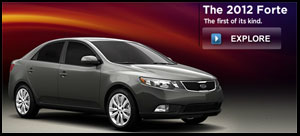[edit]Saint Patrick
Main article:
Saint PatrickLittle is known of Patrick’s early life, though it is known that he was born in Roman Britain in the 4th century, into a wealthy Romano-British family. His father and grandfather were deacons in the Church. At the age of sixteen, he was kidnapped by Irish raiders and taken captive to Ireland as a slave.[12] It is believed he was held somewhere on the west coast of Ireland, possibly Mayo, but the exact location is unknown. According to his Confession, he was told by God in a dream to flee from captivity to the coast, where he would board a ship and return to Britain. Upon returning, he quickly joined the Church in Auxerre in Gaul and studied to be a priest.[citation needed]
In 432, he again said that he was called back to Ireland, though as a bishop, to Christianise the Irish from their native polytheism. Irish folklore tells that one of his teaching methods included using the shamrock to explain the Christian doctrine of the Trinity to the Irish people. After nearly thirty years of evangelism, he died on 17 March 461, and according to tradition, was buried at Downpatrick. Although there were other more successful missions to Ireland from Rome, Patrick endured as the principal champion of Irish Christianity and is held in esteem in the Irish Church.
[edit]Wearing of the green
Originally, the colour associated with Saint Patrick was blue. Over the years the colour green and its association with Saint Patrick’s day grew.[13] Green ribbons and shamrocks were worn in celebration of St Patrick’s Day as early as the 17th century.[14] He is said to have used the shamrock, a three-leaved plant, to explain the Holy Trinity to the pagan Irish, and the wearing and display of shamrocks and shamrock-inspired designs have become a ubiquitous feature of the day.[15][16] In the 1798 rebellion, in hopes of making a political statement, Irish soldiers wore full green uniforms on 17 March in hopes of catching public attention.[13] The phrase “the wearing of the green”, meaning to wear a shamrock on one’s clothing, derives from a song of the same name.
[edit]In Ireland

According to legend, Saint Patrick used the shamrock, a three-leaved plant, to explain the Holy Trinity to the pre-Christian Irish people.
Saint Patrick’s feast day, as a kind of national day, was already being celebrated by the Irish in Europe in the ninth and tenth centuries. In later times he became more and more widely known as the patron of Ireland.[17] Saint Patrick’s feast day was finally placed on the universal liturgical calendar in the Catholic Church due to the influence of Waterford-born Franciscan scholar Luke Wadding[18] in the early 1600s. Saint Patrick’s Day thus became a holy day of obligation for Roman Catholics in Ireland. The church calendar avoids the observance of saints’ feasts during certain solemnities, moving the saint’s day to a time outside those periods. Saint Patrick’s Day is occasionally affected by this requirement, when 17 March falls during Holy Week. This happened in 1940, when Saint Patrick’s Day was observed on 3 April in order to avoid it coinciding with Palm Sunday, and again in 2008, where it was officially observed on 14 March (15 March being used for St. Joseph, which had to be moved from 19 March), although the secular celebration still took place on 17 March. Saint Patrick’s Day will not fall within Holy Week again until 2160.[19][20] (In other countries, St. Patrick’s feast day is also 17 March, but liturgical celebration is omitted when impeded by Sunday or by Holy Week.)

A St Patrick’s Day religious procession inDownpatrick, 2010
Girls playing Irish folk music during a St Patrick’s Day parade in Dublin, 2010
Traditional St Patrick’s Day badges from the early 20th century, photographed at the Museum of Country Life in County Mayo
In 1903, Saint Patrick’s Day became an official public holiday in Ireland. This was thanks to the Bank Holiday (Ireland) Act 1903, an act of the United Kingdom Parliament introduced by Irish Member of Parliament James O’Mara.[21] O’Mara later introduced the law that required that pubs and bars be closed on 17 March after drinking got out of hand, a provision that was repealed in the 1970s. The first Saint Patrick’s Day parade held in the Irish Free State was held in Dublin in 1931 and was reviewed by the then Minister of Defence Desmond Fitzgerald. Although secular celebrations now exist, the holiday remains a religious observance in Ireland, for both the Roman Catholic Church and the Church of Ireland.Sign on a beam in Dublin’s Guinness Storehouse, a commercial museum promoting the drinking of Guinness stout on St Patrick’s Day
In the mid-1990s the government of the Republic of Ireland began a campaign to use Saint Patrick’s Day to showcase Ireland and its culture.[22] The government set up a group called St Patrick’s Festival, with the aim to:
- – Offer a national festival that ranks amongst all of the greatest celebrations in the world and promote excitement throughout Ireland via innovation, creativity, grassroots involvement, and marketing activity.
- – Provide the opportunity and motivation for people of Irish descent, (and those who sometimes wish they were Irish) to attend and join in the imaginative and expressive celebrations.
- – Project, internationally, an accurate image of Ireland as a creative, professional and sophisticated country with wide appeal, as we approach the new millennium.[23]
The first Saint Patrick’s Festival was held on 17 March 1996. In 1997, it became a three-day event, and by 2000 it was a four-day event. By 2006, the festival was five days long; more than 675,000 people attended the 2009 parade. Overall 2009’s five day festival saw close to 1 million visitors, who took part in festivities that included concerts, outdoor theatre performances, and fireworks.[24] Skyfest forms the centrepiece of the festival.
The topic of the 2004 St. Patrick’s Symposium was “Talking Irish”, during which the nature of Irish identity, economic success, and the future were discussed. Since 1996, there has been a greater emphasis on celebrating and projecting a fluid and inclusive notion of “Irishness” rather than an identity based around traditional religious or ethnic allegiance. The week around Saint Patrick’s Day usually involves Irish language speakers using more Irish during seachtain na Gaeilge (“Irish Week”).[citation needed]
As well as Dublin, many other cities, towns, and villages in Ireland hold their own parades and festivals, including Cork, Belfast, Derry, Galway, Kilkenny, Limerick, and Waterford.
The biggest celebrations outside Dublin are in Downpatrick, County Down, where Saint Patrick is rumoured to be buried. In 2004, according to Down District Council, the week-long St. Patrick’s Festival had more than 2,000 participants and 82 floats, bands, and performers and was watched by more than 30,000 people.[citation needed]
The shortest St Patrick’s Day parade in the world takes place in Dripsey, Cork. The parade lasts just 100 yards and travels between the village’s two pubs.[25]
Christian leaders in Ireland have expressed concern about the secularisation of St Patrick’s Day. In The Word magazine’s March 2007 issue, Fr. Vincent Twomey wrote, “It is time to reclaim St Patrick’s Day as a church festival.” He questioned the need for “mindless alcohol-fuelled revelry” and concluded that “it is time to bring the piety and the fun together.”[26]
http://en.wikipedia.org/wiki/Saint_Patrick’s_Day
www.kiaofcheyenne.com











